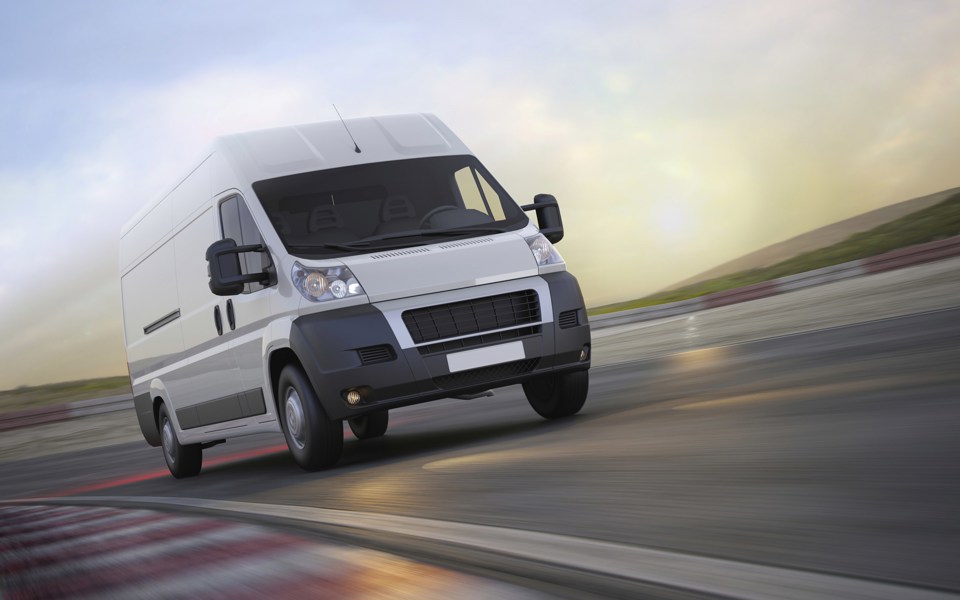The number of light commercial vehicles (LCVs) on UK roads is on the rise, with the current vehicle parc of 3.4 million forecast to almost double to six million by 2020, according to the Government.
That growth is being driven by fleets downsizing from light trucks – to smaller, cheaper, less CO2/NOx-emitting, more manoeuvrable and less regulated vans (Commercial Fleet, May 2015) – and the home delivery sector, which is fast becoming shoppers’ preferred option for everything from groceries to electrical items to general goods.
The Office of National Statistics (ONS) 2014 figures report that the annual average weekly spend online was £718.7m, of which 15% was food retailing, 37% non-food stores (e.g. department, household goods) and 48% non-store retailing. This was an increase of 11.8% compared with 2013.
Home delivery from department stores is the fastest growing sector, rising 53% since 2011, according to the ONS. However, just 10% of total sales are made online, suggesting this level of growth will continue to accelerate.
Likewise, food retailing. Less than 4% is sold online (3.7%), but the growth since 2011 is 37%.
The van parc trend – which has already seen the national LCV fleet rise from about 2.5m in 2002 – is broadly supported by the Fleet200, the listing of the 200 biggest fleets in the UK. The van parc within the Fleet200 has risen from 233,861 in 2010 to 250,908 this year.
However, while rising annual van sales are contributing to the growing van parc, the number of older LCVs on the road is also on the increase, according to finance provider LDF.
Its figures, sourced from the DVLA, show that one in three vans is at least 10 years old, which it claims is evidence of SMEs putting off investment in their fleets. In 2007, before the recession, 10-year-old-plus vans accounted for about one in five (22%) of the van parc. Consequently, the number of older vans on the road has risen from 690,000 to more than one million.
Peter Alderson, LDF managing director, said: “A lot of small businesses are pushing their vans and other parts of their commercial vehicle fleet to the absolute limit, with many often well beyond their useful economic life.
“It’s not just the repair costs and efficiency of these older vans that create problems – there’s also the very substantive negative impact on the business’s brand of using tired, dated vehicles and, additionally, the environmental factors to consider.”
Almost half of the UK van park (47%) is registered in the name of a business. The remainder are privately owned, although many will still be used for work purposes.
For company-owned vehicles, the majority of time (35%) is spent collecting and delivering goods, according to analysis by AECOM in its Van Travel Trends report published this year, of which 36% occurs between 6am and 10am and a further third between 10am and 2pm.
However, that is narrowly ahead of commuting, at 32%. Meanwhile, almost one fifth (19%) of their time on the road is spent travelling between jobs, and 3% is personal use. A further 11% is classed as ‘other’.
Why are LCV numbers on the rise?
Van activity is forecast to almost double between 2010 and 2040, with evidence that they are being used to replace larger trucks as fleets look to downsize. AECOM suggests that pay may be one reason: a van driver may earn £15,000 while an HGV driver could make £25,000.
Congestion, emissions zones and increasing urban use for home delivery also contribute to the preference for vans over trucks. Fleets are being far more analytical about their needs, which has seen many downsize their vehicles.
AECOM research also says 39% of vans are poorly used as they are less than a quarter full. The average load factor is 38%, which equates to about 300kg (interestingly, each 300kg load adds about 5g/km in CO2 emissions). Just 34% of vans operate with more than half a load while 14% run at more than three-quarters capacity.
However, the type of load has a significant influence on a van’s use and, in many instances, it is not possible for an LCV to be 100% used.
LCV road traffic incidents
In the 10 years from 2002-2012, the number of road traffic incidents involving vans fell 29%, from just under 18,000 to about 12,500, while incidents per billion miles travelled dropped 42%, from almost 550 to just over 350 (see graph, far left). This is despite the number of LCVs registered increasing by 29% over the period.
Most incidents take place between 6am and 2pm, the busiest time of day.
However, a large proportion also occurs during the quieter 2pm-6pm collection/delivery times. This afternoon period is often cited by experts as being the point at which drowsiness is at its peak.
Despite a negative ‘white van man’ image often portrayed in the national media, vans are involved in relatively few incidents. They account for 5% of all reported crashes while making up 14% of traffic. Many incidents take place in urban areas, suggesting van operators should concentrate on tackling driver performance at low speeds and on congested streets.
With almost nine out of 10 vans (89%) pulled over by the DVSA last year found to be overweight (see graph, left), loading is one of the biggest issues for fleet operators and, together with poor maintenance, a major factor in road incidents. The largest proportion of vans (42%) was between 15-30% overweight, a significant figure.
Research from Volkswagen Commercial Vehicles suggests that almost half of van drivers – equating to more than 1.2m vehicles – are driving overloaded vans.
Its study, which surveyed 250 fleet managers and 500 van drivers, found that almost 50% of fleet managers do not monitor the weights of their vans and 53% of drivers do not know their vehicle’s maximum load-carrying capacity.
Overloaded vehicles result in higher maintenance costs and excessive wear and tear due to increased pressure on suspension, engine, tyres, brakes and gearbox. It also leads to increased stopping distances, difficulty in steering and greater risk of tipping over.
DVSA statistics reinforce the maintenance issues caused by overloading. The first-time MOT failure rate for vans is about 50% (compared with 40% for cars) and the most common defects resulting in failure are faulty lights, steering, brakes and suspension.
More worryingly, three-quarters of the fleet managers surveyed by Volkswagen Commercial Vehicles did not realise their insurance could be invalidated if their van was involved in an incident and found to be over the legal weight limit.
Companies can face steep penalties for failing to comply with legal weight limits (see panel, above), including fines, immobilisation of the vehicle and, in severe cases, a court summons.
Gordon MacDonald, DVSA vehicle product manager, said: “Overloading is a real issue on our roads and it is the responsibility of both the driver and the business to load vehicles correctly and keep their van within its legal weight limit.”
Meanwhile, half of all LCVs stopped and checked each year by the DVSA have serious roadworthiness defects.
The DVSA has historically focused on trucks rather than vans – the 89% figure came from checking just 10,800 vehicles – although it should be noted that as the DVSA targets vehicles through observation, overweight vehicles are not hard to spot.
Therefore, the figures are skewed.
Nevertheless, the organisation told delegates at a Commercial Fleet Summit last year that it would be stepping up action against van fleet operators and would be looking to target companies that it knew were less likely to be compliant, such as those previously caught and those which are not members of an industry recognition scheme, such as the FTA’s Van Excellence or the DfT’s FORS.
Congestion & possible solutions
The majority of collection and deliveries (70%) occur before 2pm, with 36% between 6am and 10am and 34% between 10am and 2pm.
A further 25% take place later afternoon (2pm-6pm) with just 5% overnight (6pm-6am).
As congestion levels continue to rise, fleets will need to consider their collection and delivery schedules to improve efficiency and utilisation levels, although many are tied to customer contracts, which dictate their hours of working.
AECOM said: “Consideration could be given to attempting to spread LCV movements to other times in the day. Intelligent transport systems, such as the use of smart lockers, clever security systems and delivering to ‘open all hours’ stores, are facilitating the widening of delivery windows.”
The trend away from trucks to vans also exacerbates the congestion issue. Replacing a 12-tonne HGV with a 3.5-tonne van would require an additional 167% road space for like-for-like capacity, according to figures from the Transport Research Laboratory (TRL). It would take four vans to accommodate the maximum payload of the 12-tonne truck.
However, this only rings true if all vehicles are running at full capacity, which AECOM’s research has showed is not the case.
Nevertheless, switching to vans will inevitably increase the number of vehicles on the road, with greater potential for traffic jams, although there are benefits, too.
Analysis from the Nordic road association NVF shows that a lower number of heavier axle vehicles degrades roads less than a larger number of lighter axles. In other words, a shift from HGVs to LCVs could result in less road damage.
AECOM raises one other concern in its report. It predicts that a larger volume of trucks could lead to a greater number of incidents.
It said: “As it would take more LCVs than HGVs to deliver the same volume of goods, and they would be operated by less qualified/skilled drivers, there could be a rise in the number of road traffic incidents.”
However, it added: “Other factors are involved, and while the number of incidents might be presumed to increase, the severity of these incidents could also change.”
















Login to comment
Comments
No comments have been made yet.